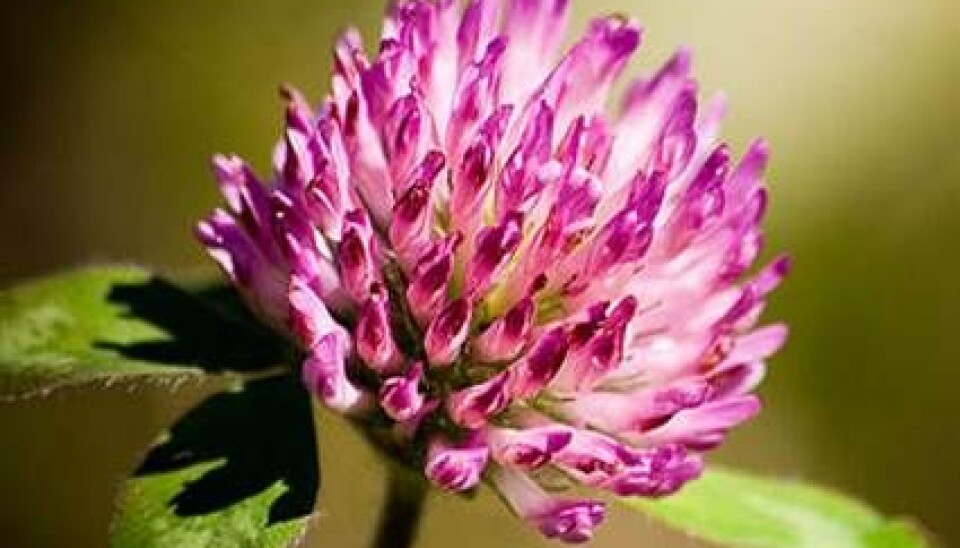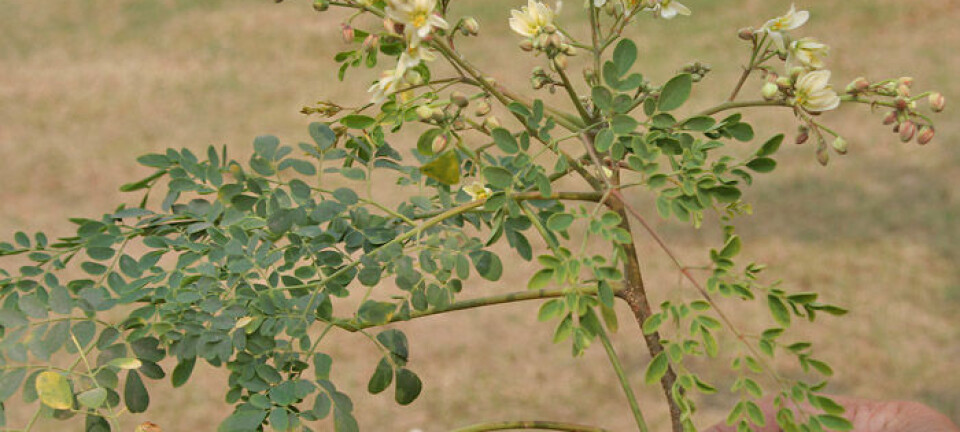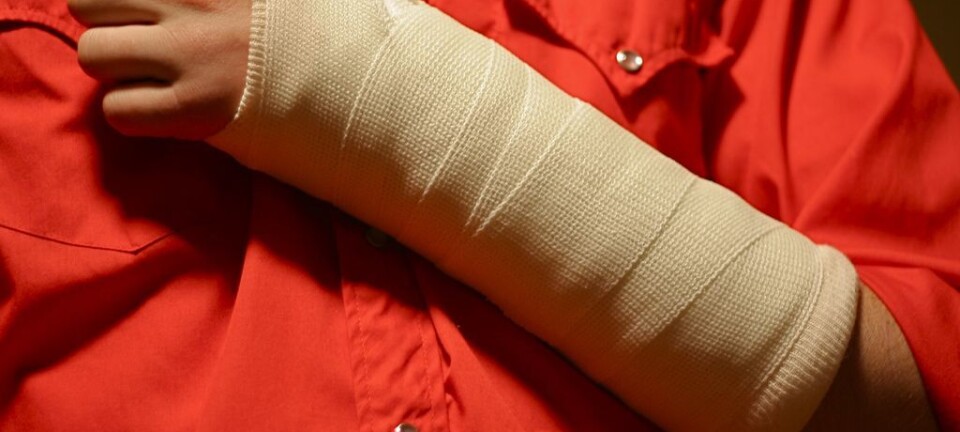
Red clover eases menopausal discomfort
Women who take red clover extracts every day experience fewer hot flashes and hormonal fluctuations and less osteoporosis than those who receive no treatment.
Hot flashes, palpitation and poor sleep.
Many of the discomforts plaguing menopausal women can be significantly reduced with a daily intake of red clover extract, say Danish researchers.
“On average, the women who received the extract had the frequency of hot flashes reduced by a third. And the hot flashes they did experience were significantly less intense, so they felt better during the day and could sleep properly at night. Last, but not least, the women’s hormonal levels and their loss of bone mass became stabilised,” reports Associate Professor, PhD, Per Bendix Jeppesen, who headed a new, as-yet-unpublished study at the Institute of Clinical Medicine, Aarhus University Hospital.
No major side effects
The researchers report the following results:
On average, the women who received the extract had the frequency of hot flashes reduced by a third. And the hot flashes they did experience were significantly less intense, so they felt better during the day and could sleep properly at night. Last, but not least, the women’s hormonal levels and their loss of bone mass became stabilised.
Per Bendix Jeppesen
- The three-month treatment led to a 32-percent reduction in hot flashes and those that did occur were less severe. This is an average figure, i.e. some of the women had a 60-percent reduction, while others only had a 20-percent reduction.
- The women who took the red clover extract experienced a slowdown of bone loss, while those who took the placebo displayed significant bone loss.
- The women’s oestrogens were better balanced, and that triggered fewer hot flashes.
- In contrast to women treated with human oestrogens, the women in this study did not complain about side effects of their treatment. Whereas women treated with human oestrogens may have fever and flu symptoms, the only discomfort associated with the red clover extract is that it doesn’t taste very good.
Study initiated by local farmer
The idea for the study came when the researchers received a phone call in 2010 from a Danish farmer, Michael Mohr Jensen, who as part of his work was developing a variety of supplements from his crops.
With the help of a local phytotherapist, Jensen saw an opportunity to help menopausal women with a natural alternative to the human oestrogens. One of these supplements was red clover, which is rich in oestrogen-like substances known as isoflavones.
He contacted Jeppesen and encouraged him to take a closer look at this extract and its potentially beneficial effects for menopausal women.
Red clover brimming with oestrogens
Jeppesen and his research colleagues were keen to accept the farmer’s challenge, since a series of small observational studies had already indicated that a daily intake of the special phytoestrogens relieved some of the women’s problems and did not increase the risk of developing diseases.
These oestrogens were extracted from various plants, and no plant has greater quantities of phytoestrogens than the red clover.
The researchers asked the farmer to continue refining his red plant extract to make it easier for the gastrointestinal tract to absorb the active ingredients in the extract.
In 2011, Jensen’s farming company started its development of a herbal extract based on red clover. The latest technology made it possible to add lactic acid bacteria. This makes it easier for the gastrointestinal tract to absorb the bioactive compounds, and thereby boosts the effect of the extract.
Extract tested in randomised controlled trials
While this was taking place, Jeppesen and colleagues started recruiting women for their study. They managed to track down 60 women who were badly affected by menopause.
The women were divided randomly into two groups, one of which was treated with the red clover extract while the other received a placebo extract.
After three months of drinking 75 ml of extract twice daily, the women were tested again. The researchers measured whether the red clover extract had changed the frequency and the intensity of the hot flashes. They also checked for changes in the women’s hormone balance and bone density.
Wristwatch counted hot flashes
Before the treatment started, the levels of FSH (Follicle-Stimulating-Hormone) in the women’s blood were measured, which revealed exactly how far along they were in their menopause.
This enabled the researchers to figure out whether the frequency of hot flashes would change if they did not receive the clover extract.
The women were fitted with the latest sensor technology on their wrists for a whole day before and after the three-month treatment. The sensor established how often the women experienced hot flashes and how severe each of the flashes were, even at night.
The effect of the extract on the bones was measured by scanning the back and the hips, which are typically affected by osteoporosis during menopause. The scans revealed the density of the bones, which the researchers used to determine whether the bones degraded during the three-month period.
The new findings look so promising that Jeppesen and his colleagues have already started planning a more comprehensive study based on a larger sample of women, who will be monitored over time.
The researchers are hoping to develop a treatment with red clover extract that can actually boost bone formation in the women.
They are currently putting the finishing touches on a scientific article, which will soon be submitted for peer review for publication in a scientific journal.
---------------------------
Read the Danish version of this article at videnskab.dk
Translated by: Dann Vinther





